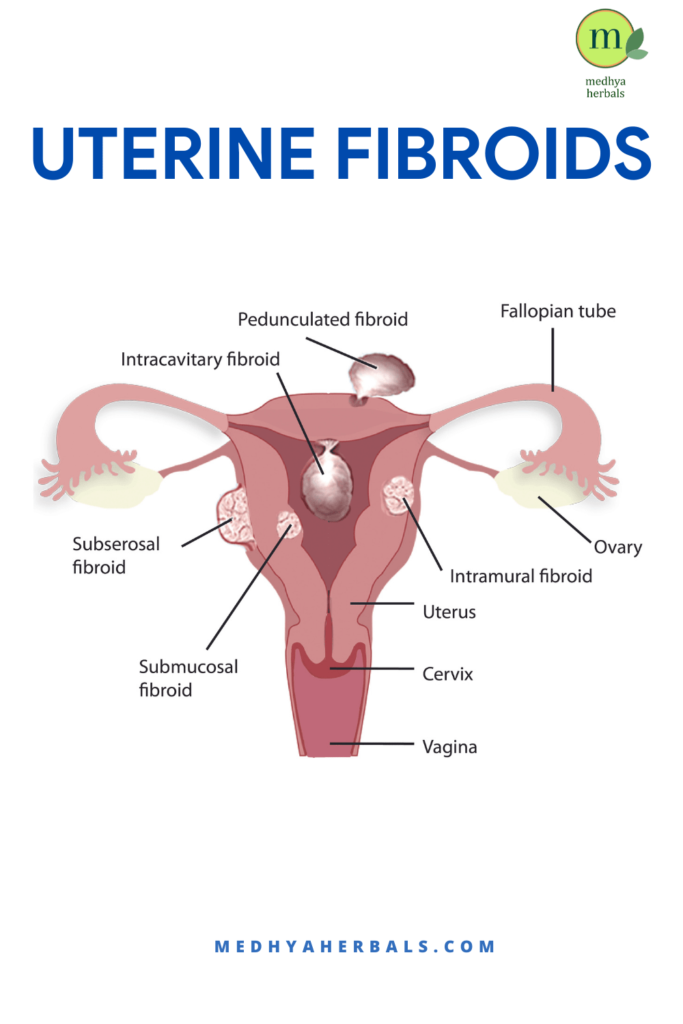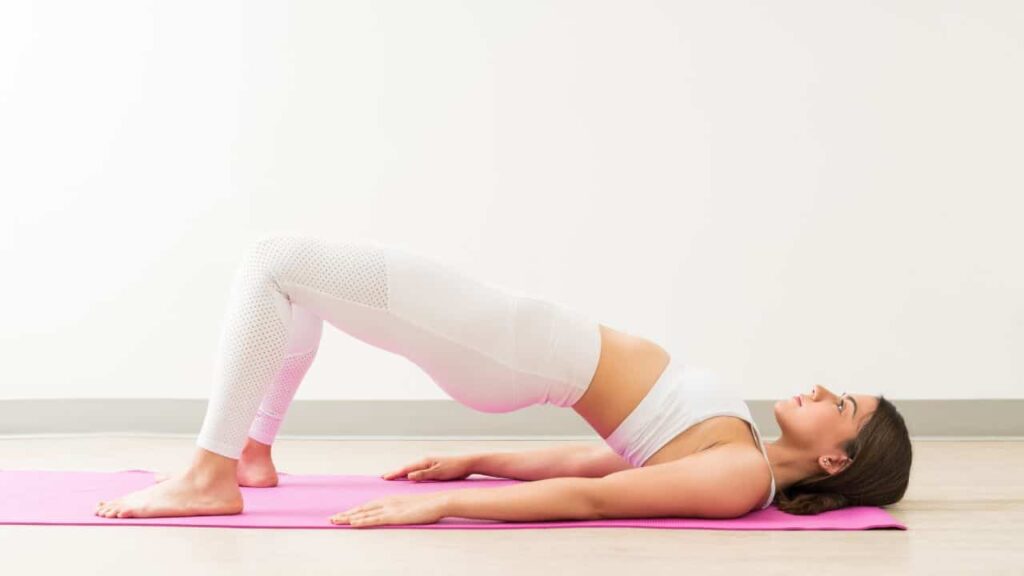Uterine fibroids are non-cancerous growths that develop in the uterus. These growths can cause discomfort, pain, and heavy bleeding, making it important for women to find effective treatment options. While there are several medical treatments available, many women prefer to explore natural options such as yoga for fibroids treatment.
Yoga has been used for centuries to improve physical and mental health, and recent studies have shown that it can also be an effective treatment option for fibroids. In this blog post, we will explore the science behind yoga for fibroids, and provide step-by-step instructions for yoga poses that can help shrink fibroids naturally.

Understanding Yoga for Fibroids
Regular practice of yoga can help shrink fibroids naturally by reducing stress levels and promoting overall health and well-being. Stress has been shown to have a direct impact on the development of fibroids, as it can cause an increase in the levels of hormones that stimulate the growth of these benign tumors.
Yoga helps to reduce stress through deep breathing and mindfulness techniques, which can calm the mind and reduce anxiety. Additionally, certain yoga poses, such as forward bends and inverted poses, can help to regulate hormones and promote the healthy functioning of the reproductive system.
Incorporating yoga into your daily routine can also improve circulation, which is important for reducing the symptoms of fibroids, such as heavy menstrual bleeding and pain. Certain yoga poses, such as Warrior I and Triangle, can help to increase blood flow to the reproductive organs and improve overall circulation. Also, The deep breathing and relaxation techniques used in yoga help to reduce stress, which has been linked to the development of fibroids.
Finally, regular practice of yoga can also improve digestion and support liver function, both of which are important for reducing the risk of fibroids. By promoting overall health and well-being, yoga can help to shrink fibroids naturally and reduce the risk of recurrence.
Yoga Poses for Fibroids Treatment
There are several yoga poses that are effective for fibroids treatment. These poses help to improve circulation, reduce stress, and promote relaxation. Some of the most effective yoga poses for fibroids include:
Child’s Pose:

Start on your hands and knees, with your wrists under your shoulders and your knees under your hips. Exhale and sit back on your heels, lowering your forehead to the mat and extending your arms in front of you. Relax your whole body, allowing your forehead to rest on the mat. Hold for 5 to 10 breaths.
Cat-Cow Pose:

Start on your hands and knees, with your wrists under your shoulders and your knees under your hips. Inhale and arch your back, lifting your tailbone and head towards the ceiling. Exhale and round your spine, tucking your chin to your chest and bringing your tailbone towards your knees. Repeat this movement, moving smoothly between cat and cow pose with each inhale and exhale.
Cobra Pose:

Start lying on your stomach with your hands under your shoulders and your elbows close to your sides. Inhale and press into your hands, lifting your chest and head off the mat. Keep your elbows close to your sides and look forward. Hold for 5 to 10 breaths.
Downward-Facing Dog Pose:

Start on your hands and knees, with your wrists under your shoulders and your knees under your hips. Exhale and lift your hips towards the ceiling, coming into an inverted “V” shape. Press into your hands and feet, straightening your arms and legs. Relax your head and neck, letting them hang down. Hold for 5 to 10 breaths.
Warrior I Pose:

Start standing, with your feet hip-width apart. Step your left foot back, turning it out to the left. Bend your right knee, bringing your thigh parallel to the floor. Raise your arms above your head, keeping your palms facing each other. Look forward, keeping your gaze steady. Hold for 5 to 10 breaths, then switch sides.
Warrior II Pose:

Start standing, with your feet hip-width apart. Step your left foot back, turning it out to the left. Bend your right knee, bringing your thigh parallel to the floor. Stretch your arms out to the sides, with your right arm in front and your left arm behind. Look forward, keeping your gaze steady. Hold for 5 to 10 breaths, then switch sides.
Triangle Pose:

Start standing, with your feet hip-width apart. Step your left foot out to the left, turning it out to the left. Stretch your right arm out to the right and your left arm down towards your left foot. Look down towards your left foot, keeping your gaze steady. Hold for 5 to 10 breaths, then switch sides.
Seated Forward Bend:

Start seated with your legs extended straight in front of you. Bend forward from your hips, reaching towards your toes. If you can’t reach your toes, use a strap or towel to help. Hold for 5 to 10 breaths.
Bridge Pose:

Start lying on your back with your knees bent and your feet flat on the floor, hip-width apart. Place your arms alongside your body with your palms facing down. As you inhale, press into your feet and lift your hips towards the ceiling, keeping your knees bent and aligned over your ankles. Clasp your hands together and interlace your fingers under your hips, extending your arms towards your feet. Lengthen through your spine and open your chest, keeping your chin slightly tucked. Hold for 5 to 10 breaths, then release on an exhale and lower your hips back to the floor.
Note: It is important to practice proper form and breathing when performing these yoga poses. This not only ensures that you are getting the most benefit from each pose, but it also helps to reduce the risk of injury.
Incorporating Yoga into Your Fibroids Treatment Plan
Incorporating yoga into your fibroids treatment plan is simple and can be done at home. It is recommended to practice yoga for at least 30 minutes a day, 5 days a week. This frequency and duration can be adjusted based on your individual needs and comfort level.
To make yoga a part of your daily routine, try setting aside a specific time each day for your practice. This can be in the morning, before bed, or at any other time that works for you. It is also helpful to create a designated space for your yoga practice, such as a quiet room or a corner of your living room.
Here are a few tips to help you incorporate yoga for fibroids treatment plan:
- Start slowly: Begin with gentle yoga poses and gradually increase the intensity of your practice as your body becomes stronger and more flexible.
- Focus on pelvic region: Yoga poses that specifically target the pelvic region, such as the Bridge Pose, Warrior I and II, and Triangle Pose, can help shrink fibroids and reduce symptoms such as heavy menstrual bleeding.
- Practice regularly: Consistent and regular practice of yoga is key to seeing results. Aim to practice yoga at least three times a week for best results.
- Incorporate deep breathing: Deep breathing is a crucial component of yoga and can help improve circulation, reduce stress and calm the mind, all of which can help shrink fibroids.
- Listen to your body: Pay attention to your body and be mindful of any discomfort or pain. If a pose is too difficult or causes pain, modify it or skip it entirely.
- Work with a qualified instructor: Consider working with a qualified yoga instructor who can provide guidance and support as you incorporate yoga into your treatment plan.
By incorporating yoga into your treatment plan for fibroids, you can help shrink fibroids naturally and reduce symptoms while improving overall physical and mental well-being.
Takeaway
Yoga is a natural and effective treatment option for uterine fibroids. By improving circulation and reducing stress, yoga can help to shrink fibroids and improve overall health. Incorporating yoga into your fibroids treatment plan is simple and can be done at home, making it an accessible option for women everywhere.
It is important to note that while yoga is a natural and effective way to reduce the risk of fibroids, it should not be used as a replacement for medical treatment. If you have fibroids, it is important to talk to your doctor about the best course of action for your individual situation. This will help to ensure that yoga is safe and effective for you, and that it does not interfere with any other treatments you may be receiving.
FAQ
What are fibroids and how can yoga help in their treatment?
Fibroids are non-cancerous growths that develop in the uterus and can cause discomfort, heavy menstrual bleeding, and other symptoms. Regular yoga practice has been shown to be an effective way to shrink fibroids naturally and manage their symptoms.
How can I include yoga into my treatment plan for fibroids?
If you have been diagnosed with fibroids, consider speaking with your healthcare provider about adding yoga to your treatment plan. Here are some tips for incorporating yoga into your routine:
- Find a yoga teacher who is experienced in working with women’s health issues, such as fibroids.
- Start with gentle, restorative yoga poses and gradually progress to more challenging poses as you build strength and flexibility.
- Practice regularly, aiming for at least 3 to 4 times per week.
- Focus on poses that target the pelvic area and support the reproductive system, such as bridge pose, child’s pose, and cobra pose.
Is it safe to practice yoga with fibroids?
Yes, it is generally safe to practice yoga with fibroids. However, it is important to consult with your healthcare provider before starting any new exercise routine, especially if you have any concerns about your fibroids or if you experience any pain or discomfort during your practice.
Can practicing yoga alone completely treat fibroids?
While yoga can be an effective tool in managing the symptoms of fibroids and shrinking them naturally, it is not a substitute for medical treatment. If you have been diagnosed with fibroids, it is important to work with your healthcare provider to develop an individualized treatment plan that addresses your specific needs and goals. This may include a combination of yoga, medication, and other treatments, depending on the size and location of your fibroids, your overall health, and other factors.
References
- Al-Hendy, A., & Badr, M. (2014). Can vitamin D reduce the risk of uterine fibroids? Women’s Health, 10(4), 353-358. https://doi.org/10.2217/whe.14.24
- Brakta, S., Diamond, J. S., Al-Hendy, A., Diamond, M. P., & Halder, S. K. (2015). Role of vitamin D in uterine fibroid biology. Fertility and Sterility, 104(3), 698-706. https://doi.org/10.1016/j.fertnstert.2015.05.031
- Catherino, W., Eltoukhi, H., & Al-Hendy, A. (2013). Racial and ethnic differences in the pathogenesis and clinical manifestations of uterine Leiomyoma. Seminars in Reproductive Medicine, 31(05), 370-379. https://doi.org/10.1055/s-0033-1348896
- Fibroids. (2022). Johns Hopkins Medicine, based in Baltimore, Maryland. https://www.hopkinsmedicine.org/health/conditions-and-diseases/uterine-fibroids
- He, Y., Zeng, Q., Dong, S. Y., Qin, L. Q., Li, G., & Wang, P. (2013). Associations between Uterine Fibroids and Lifestyles Including Diet, Physical Activity and Stress: A Case-control Study in China. Asia Pacific Journal of Clinical Nutrition, 22(1), 109-117. https://doi.org/10.6133/apjcn.2013.22.1.07
- Medikare, V., Kandukuri, L. R., Ananthapur, A., Deenadayal, M., & Nallari, P. (2011). The genetic bases of uterine fibroids; a review. Journal of Reproduction & Infertility, 12(3), 181-91. https://www.ncbi.nlm.nih.gov/pmc/articles/PMC3719293/pdf/JRI-12-181.pdf
- Okolo, S., Gentry, C., Perrett, C., & Maclean, A. (2005). Familial prevalence of uterine fibroids is associated with distinct clinical and molecular features. Human Reproduction, 20(8), 2321-2324. https://doi.org/10.1093/humrep/dei049
- Qin, H., Lin, Z., Vásquez, E., Luan, X., Guo, F., & Xu, L. (2020). Association between obesity and the risk of uterine fibroids: a systematic review and meta-analysis. Journal of Epidemiology and Community Health, 75(2), 197-204. https://doi.org/ 10.1136/jech-2019-213364
- Reis, F. M., Bloise, E., & Ortiga-Carvalho, T. M. (2016). Hormones and pathogenesis of uterine fibroids. Best Practice & Research Clinical Obstetrics & Gynaecology, 34, 13-24. https://doi.org/10.1016/j.bpobgyn.2015.11.015
- Schellenberg, R. (2001). Treatment for the premenstrual syndrome with agnus castus fruit extract: Prospective, randomised, placebo controlled study. BMJ, 322(7279), 134-137. https://doi.org/10.1136/bmj.322.7279.134
- Tinelli, A., Vinciguerra, M., Malvasi, A., Andjić, M., Babović, I., & Sparić, R. (2021). Uterine Fibroids and Diet. International Journal of Environmental Research and Public Health, 18(3), 1066. https://doi.org/10.3390/ijerph18031066
- Ulin, M., Ali, M., Chaudhry, Z. T., Al-Hendy, A., & Yang, Q. (2019). Uterine fibroids in menopause and perimenopause. Menopause, 27(2), 238-242. https://doi.org/10.1097/gme.0000000000001438
- Uterine fibroids: Symptoms, causes, risk factors & treatment. (2020, August 24). Cleveland Clinic. https://my.clevelandclinic.org/health/diseases/9130-uterine-fibroids
- Van Die, M., Burger, H., Teede, H., & Bone, K. (2012). Vitex agnus-castus extracts for female reproductive disorders: A systematic review of clinical trials. Planta Medica, 79(07), 562-575. https://doi.org/10.1055/s-0032-1327831
- Wise, L. A., & Laughlin-Tommaso, S. K. (2016). Epidemiology of uterine fibroids. Clinical Obstetrics & Gynecology, 59(1), 2-24. https://doi.org/10.1097/grf.0000000000000164
- Zhao, S., Gardner, K., Taylor, W., Marks, E., & Goodson, N. (2015). Vitamin D assessment in primary care: Changing patterns of testing. London Journal of Primary Care, 7(2), 15-22. https://doi.org/10.1080/17571472.2015.11493430

